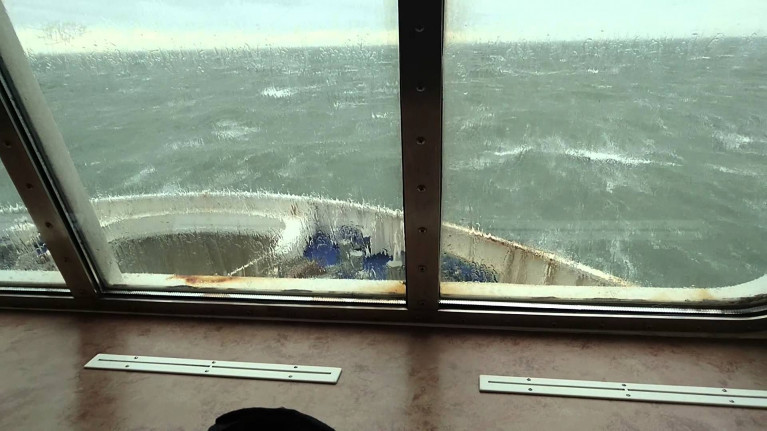Displaying items by tag: Stormy Seas
Stormy Seas Face Ferryport of Holyhead While Offshore Cargoships Ride Out the Weather
As stormy seas hit the commercial reality of a post-Brexit Holyhead ferryport, the UK Met Office marine forecast for the Irish Sea was up to severe gale force 9, with ships today riding out bad weather off Anglesey, writes Jehan Ashmore
Afloat observed RMS Veritas depart Dublin Bay yesterday, following its 'inbound' maiden sailing to Dublin Port for a Dutch operator, Samskip and their first direct route from Amsterdam.
The containership was spotted mid-morning bound for Rotterdam, Europe's largest port and also served by Samskip, however bad weather forced a diversion off Wicklow Head. This led to a crossing over to the Welsh coast to the relative shelter off Llŷn Peninsula, south of Anglesey.
Also still off Anglesey is Arrow, Seatruck's ro-ro freight ferry chartered to the Isle of Man Steam Packet which was enroute from Birkenhead (Merseyside) to Portsmouth. The freighter since 2014 has been on long-term charter to the Steam Packet, however if not in use the vessel has been sub-chartered to other operators.
In particular, as Afloat reported over the years, sub-chartering work has took place with Condor Ferries operations linking Portsmouth and the Channel Islands. Likewise of the Steam Packet, they operate a ropax, Commodore Clipper, which is a larger version of the Isle of Man's main ferry Ben-My-Chree. This ro-pax is to be replaced by a newbuild named Manxman in 2023.
Another containership, Energy which having departed Cadiz in northern Spain, is subjected also to the bad weather with the ship close to RMS Veritas and Arrow. The containership's next port of call is Dublin from where MacAndrews (now CMA-CGM's rebranded 'Containerships') operates two Lo-Lo vessels on a UK-Ireland-Portugal-Spain route with onward sea service connections.
A fourth vessel had also been in the vicinity, Whitaker Tankers coastal supply tanker Keewhit. Likewise of RMS Veritas, the small short-sea ship had also crossed from the Irish coast having sailed from the south-east ferryport of Rosslare Europort.
Keewhit which serves UK and Irish waters, had transferred 'bunkers' to ferries increasingly using the busy port in Co. Wexford, as freight hauliers want to avoid the fallout of post-Brexit. This entails ferry operators providing direct routes to northern France and maintain freight traffic flows to mainland Europe and benefitting truck drivers exclusively within EU only transport.
Whereas back in UK waters, the bunker tanker which is also a familar caller in nearby Holyhead, at the time of writing is offshore but bound for Liverpool to refuel no less for the next cargo delivery assignment.
Stormy Start to February Cause Cancelled Sailings
#CancelledSailings - As yet another storm batters the coast, some ferry sailings have been cancelled today and for tomorrow on the Irish Sea.
Travellers are advised to check for updates on the latest sailing information from operators by clicking these following website links for Irish Ferries, Stena Line and P&O Ferries.
In addition further details are also available by visiting the AA's ferrywatch service.

























































